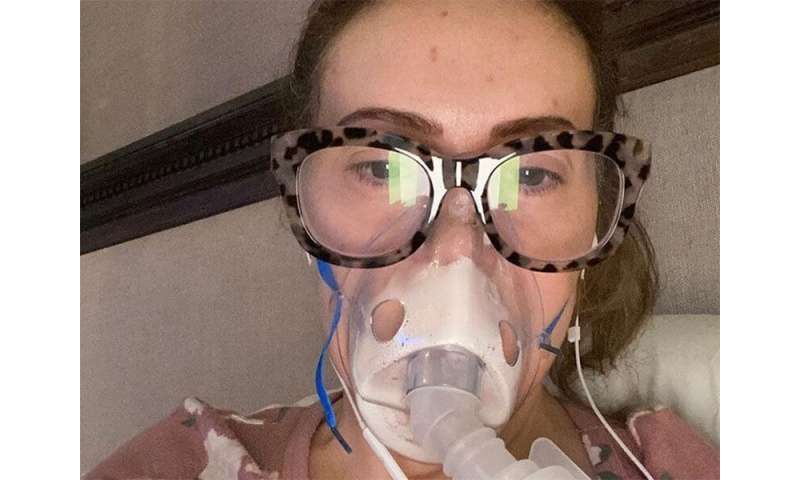
(HealthDay)—When actress Alyssa Milano was first struck by the new coronavirus back in March, her symptoms mirrored the classic signs of COVID-19: fever, headache, loss of smell, chest heaviness, extreme breathing difficulties and a bad stomach.
“It felt like I was dying,” Milano, 47, posted on Twitter.
Those symptoms have persisted, and even expanded to include vertigo, heart palpitations, memory loss, confusion, menstruation disruption and general malaise.
The good news is that Milano, star of several TV series—such as “Who’s the Boss,” “Melrose Place” and “Charmed”— said she’s finally on the road to recovery. The bad news: COVID-19 is now causing her hair to fall out.
“This is my hair loss from COVID-19,” declared Milano, who returned to Twitter on Sunday to post a video of her ongoing ordeal.
Armed with a detangler brush, she’s seen slowly combing through her hair. One minute later, she holds up a large clump of hair.
“I just wanted to show you the amount of hair that is coming out of my head as a result of COVID,” she said.
What’s happening?
“Telogen effluvium,” explained Dr. Patrick Angelos, a board-certified plastic and reconstructive surgeon at Charleston Plastic Surgery, in South Carolina.
A specialist in hair restoration, Angelos said the condition is characterized by “a temporary loss [of hair] thought to be a defense mechanism to help the body conserve vital energy, nutrients for fighting infection [or] recovering from trauma.”
The condition is unlikely to be directly caused by COVID-19 itself, he said. Rather it’s “likely an immune and systemic response caused by the body’s reaction to the virus.”
That means that the degree of hair loss “may vary based on [the] degree of infection and each person’s different immune system and their response to the virus,” Angelos said.
As to the mechanism behind the loss, Angelos explained that “for the average person, at any given time, 85% of the hairs on their head are actively growing.” Normally, the remaining 15% are in the so-called telogen phase, which essentially means they are resting, he said.
“With telogen effluvium, the percentage [of hairs] that are resting increases to 30%, which is a noticeable difference,” Angelos added. And that means that while losing about 100 strands of hair a day is actually “pretty normal,” the condition raises this loss to around 300 strands daily.
However, Angelos does have some words of reassurance for Milano and other COVID-19 patients who might be dumbstruck at the sight of their hair falling out.
“It is unlikely a person would lose all of their hair,” he said. “It can be disconcerting to see large amounts of hair falling out. But they will be replaced with new hair, and the areas of loss will be filled in again.”
Still, is there anything patients can do to stem the tide once the shedding begins?
“The first line of defense would be to find and repair the source of the stress or trauma to minimize the damage,” said Angelos. But when the source of the stress is a disease with no cure, that’s easier said than done.
So, he advised putting the focus on maintaining a healthy, balanced diet, getting plenty of rest, and avoiding smoking, as ingestion of heavy metals can escalate hair loss.
Patients can also consider more involved medical treatments, he noted. One such procedure is “platelet-rich plasma therapy,” which entails drawing and processing a patient’s own blood before injecting it directly into their scalp. The hope is that increasing blood supply to hair follicles will trigger hair growth.
For patients unwilling to go that route, Angelos reiterated that hair loss due to COVID-19 is a reversible condition, with full hair restoration typically occurring within six months to a year out.
For Milano, whose hair loss is continuing, that may bring a little hope.
Source: Read Full Article
